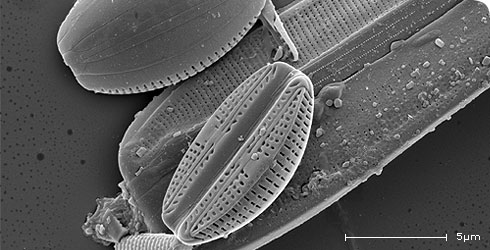Reproduction
All diatom cells have an older and a younger half-wall, known as the epi- and hypo-theca respectively. When diatom cells divide vegetatively, the two offspring inherit one half-wall but must generate a new half-wall (semi-conservative wall development). Thus the hypotheca of the parent cell becomes the epitheca of one of the offspring (the epitheca of the parent becomes the epitheca of the other offspring).
New walls are formed within the protoplast of the offspring, in a special membrane-bound vesicle, the silica deposition vesicle (SDV). When the new half-wall is complete, there is reorganisation of the plasmalemma (cell membrane) and the silicalemma (membrane of the SDV), so that the inner face of the SDV becomes part of the plasmalemma.
The close juxtaposition of developing sibling valves means that they sometimes have corresponding humps and depressions, but also that they can become linked together to form colonies by the formation of interlocking spines around their margins. This is particularly found in diatoms that live in the plankton.
